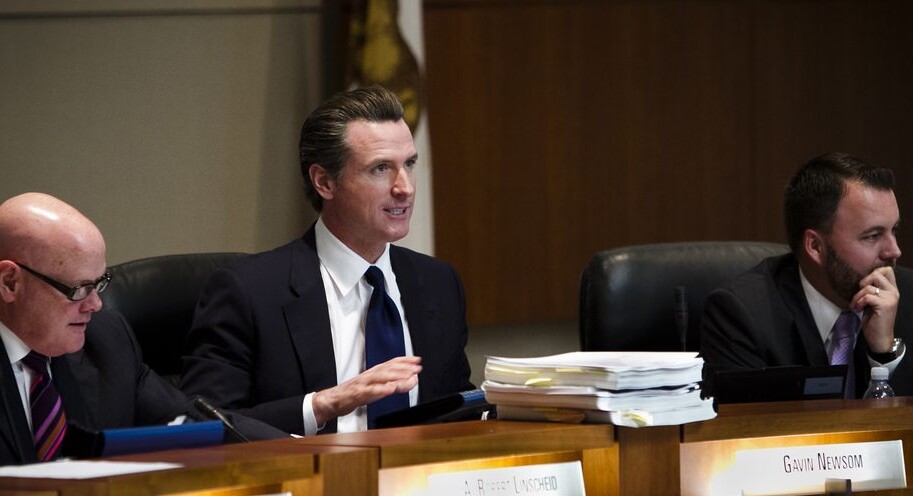by Mike Sandler, co-founder of The Climate Center
With Federal climate action stalled for years, climate activists have looked to California to lead the way. And California has in many ways, including by adopting the most ambitious multi-sector GHG cap in the country and an economywide carbon price, the first and still only one in the United States. However, when it comes to climate dividends, California has not lived up to its full potential.
But with our new Governor Gavin Newsom reviewing Cap & Trade expenditures and priorities, there is a rare and exciting opening for climate dividends to become a reality.
First, a quick recap of the state of climate dividends in California. After California passed AB32 in 2006, the California Air Resources Board convened the Economic and Allocations Advisory Committee (EAAC), which released recommendations for carbon price design in 2010, including returning “the largest share (roughly 75%) of allowance value…to California households.” This recommendation was not carried out, as we’ll see below. Meanwhile, the California Public Utilities Commission held a proceeding on the allocation of allowances in the electric utility sector and declared that 100% of proceeds from the electricity sector should be returned to ratepayers, including a non-volumetric (equal per households) “climate dividend” rebate. This was instituted as the California Climate Credit, seen as a line-item on utility bills starting in April 2014. The Credit was expanded to include revenues from the natural gas sector in 2018.
So, what happened to the Cap and Trade revenues? Since the Cap & Trade program began in November 2012, the Air Board, under direction from Governor Jerry Brown and with approval of the State Legislature, has spent $1.2 billion dollars on high speed rail and $959 million on urban infill housing. An additional $400 million was given to the California High-Speed Rail Authority (CHSRA) to repay a loan they took before any auction revenues had materialized. Combined with the total $6.1 billion, this represents about 39% of monies available. Indeed, when the State extended the Cap & Trade program through 2030, Governor Brown made a point to include a requirement for 25% of Cap & Trade funds to be used for high speed rail going forward. It looks like now-Governor Gavin Newsom is reviewing that approach.
In Governor Newsom’s inaugural 2019 State of the State Address, he acknowledged publicly that the high-speed rail program will need modifications. No one knows what this means exactly, but let’s assume that one outcome would be taking it off the life-support of Cap & Trade funds. Let’s also assume that Governor Newsom is willing to move the infill and affordable housing projects (which have taken about 20 percent of Cap & Trade appropriations) out of Cap & Trade and back into the regular budgeting process. Using 2017-2018 estimates, this would free up $356 million from high-speed rail, and $285 million from infill and affordable housing. Another source of Cap & Trade revenues that could be used as dividends is the free allowances currently given to industry. In 2016, the Petroleum Refining, Natural Gas Extraction, and Cement sectors received over 49 million free allowances. At $15.31 per allowance, that subsidy is worth over $750 million per year.
Finally, what if the Climate Credit were changed from an on-bill line item on their utility bill (that no one sees) into off-bill amount and combined with the other funding sources? The utility sector’s amount in 2016 was $771 million. This gives us a cool $2.16 billion per year for dividends. With approximately 40 million Californians, this would equal a climate dividend of $54 per person per year. OK, no one is going to retire. But every time the carbon price goes up, the dividend would go up. Every time someone receives their dividend through a check in the mail or onto a debit card, there will be one more supporter of carbon pricing, and one more person who would support a tighter carbon cap (because that means a bigger dividend). And as they spend that money back into the economy, think of the economic stimulus, funded by polluting companies.
Governor Newsom seems to be clued in to Silicon Valley, so he probably knows that the CEOs are excited about basic income. Several of them have said it is necessary for the economy of the future. Governor Newsom has proposed a “data dividend” that would monetize our digital profiles. Climate dividends would be a great next step, because even though my Facebook posts are clever, they won’t actually save the climate (and I know at least one person whose Tweets actually harm the climate). Gov. Newsom likely recognizes the sour, populist mood at the national level, and the concern about ongoing economic inequality. People are asking, why doesn’t the money ever “trickle down” to them? In fact, that was the basis of the Tea Party movement, and part of the Rust Belt states’ discontent reflected in the 2016 election. Dividends could address California’s own disadvantaged communities’ rightful concern that the Cap & Trade revenues focus only on coastal cities. Governor Newsom can use climate dividends to make good on California’s desire for climate leadership, while making the expenditures simpler, less politicized, and more transparent. By decreasing subsidies to the fossil fuel industry and moving the funding for high-speed rail and affordable housing back into the regular budget process, he could free up billions of dollars of California’s Cap & Trade revenues and return them back to people as climate dividends.
